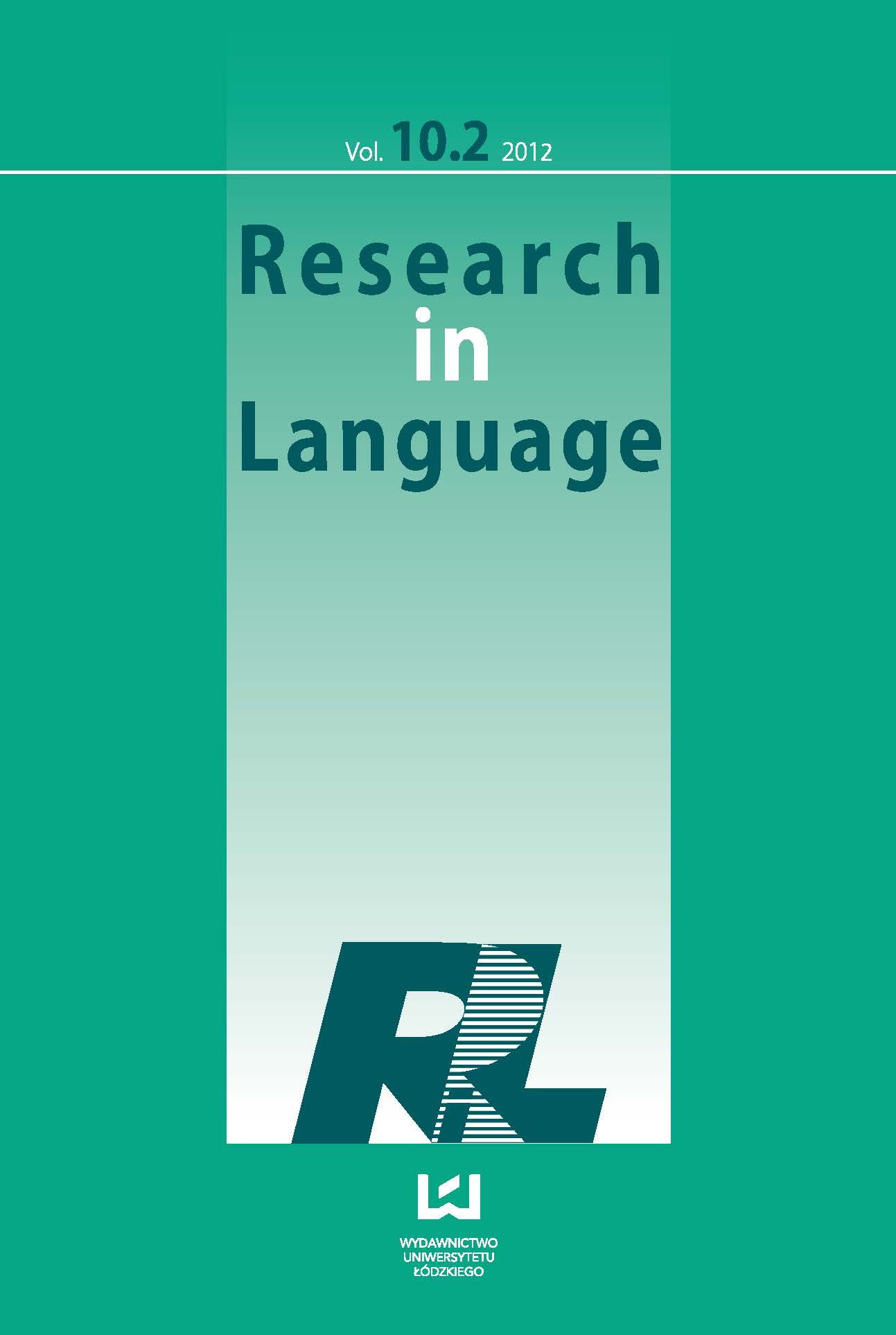Initial Glottalization and Final Devoicing in Polish English
DOI:
https://doi.org/10.2478/v10015-011-0044-7Abstract
This paper presents an acoustic study of the speech of Polish leaners of English. The experiment was concerned with English sequences of the type George often, in which a word-final voiced obstruent was followed by a word-initial vowel. Acoustic measurements indicated the degree to which learners transferred Polish-style glottalization on word-initial vowels into their L2 speech. Temporal parameters associated with the production of final voiced obstruents in English were also measured. The results suggest that initial glottalization may be a contributing factor to final devoicing errors. Adopting English-style ‘liaison’ in which the final obstruent is syllabified as an onset to the initial vowel is argued to be a useful goal for English pronunciation syllabi. The implications of the experiment for phonological theory are also discussed. A hierarchical view of syllabic structures proposed in the Onset Prominence environment allows for the non-arbitrary representation of word boundaries in both Polish and English.
References
Ashby, M. & J. Przedlacka. 2011. The stops that aren’t. Ms. UCL.
Google Scholar
Beckman, Mary & Jan Edwards. 1990. Lengthenings and shortenings and the nature of prosodic constituency. In J. Kingston & M. Beckman (eds.), Papers in Laboratory Phonology I: 179-200. Cambridge, UK: Cambridge University Press.
Google Scholar
Chen, Matthew. 1970. Vowel length variation as a function of the voicing of the consonant environment. Phonetica 22: 129-159.
Google Scholar
Dilley, L., Shattuck-Hufnagel, S., and Ostendorf, M. 1996. Glottalization of word-initial vowels as a function of prosodic structure. Journal of Phonetics 24: 423-444.
Google Scholar
Dukiewicz, L. and I. Sawicka. 1995. Gramatyka współczesnego języka polskiego - fonetyka i fonologia. Kraków: Wydawnictwo Instytutu Języka Polskiego PAN.
Google Scholar
Golston, C. and H. van der Hulst. 1999. Stricture is structure. In B. Hermans and M. van Oostendorp, (eds.) The Derivational Residue in Phonological Optimality Theory. Amsterdam: John Benjamins: 153-173.
Google Scholar
Gonet, W. & G. Pietroń. 2004. The Polish Tongue in the English Ear. Zeszyty Naukowe PWSZ w Koninie, nr 1/2004 (4), pp. 56-65.
Google Scholar
Gussmann, E. 2007. The Phonology of Polish. Oxford: Oxford University Press.
Google Scholar
Kaźmierski, K. 2007. Dynamic specification in English vowels - implications for Polish learners. Unpublished BA thesis. UAM Poznań.
Google Scholar
Maddieson, I. (1997). Phonetic universals. In Hardcastle, W. and J. Laver (eds). The Handbook of Phonetic Sciences. Cambridge: Blackwell. 619-640.
Google Scholar
Pöchtrager, M. 2006. The structure of length. Ph.D. dissertation. University of Vienna.
Google Scholar
Port, R. & J. Dalby. 1982. C/V ratio as a cue for voicing in English. Perception and Psychophysics 2. 141-152.
Google Scholar
Redi, L. and S. Shattuck-Hufnagel. 2001. Variation in the realization of glottalization in normal speakers. Journal of Phonetics 29: 407-429.
Google Scholar
Rejniak, J. 2011. What is final? Factors affecting devoicing errors in the speech of Polish learners of English. Unpublished BA thesis. UAM Poznań.
Google Scholar
Rubach, J. and G. Booij. 1990. Syllable structure assignment in Polish. Phonology 7: 121-158.
Google Scholar
Scheer, T. 2008. Why the Prosodic Hierarchy is a diacritic and why the Interface must be Direct. Sounds of Silence: Empty Elements in Syntax and Phonology, edited by Jutta Hartmann, Veronika Hegedüs & Henk van Riemsdijk, 145-192. Amsterdam: Elsevier.
Google Scholar
Schwartz, G. 2010. Auditory representations and the structures of GP 2.0. Acta Linguistica Hungarica 57: 381-397.
Google Scholar
Schwartz, G. 2011. Avoiding stop insertion after English angma - a representational solution. In: Dziubalska-Kołaczyk, K.; Wrembel, M.; Kul,M. (eds.). Achievements and perspectives in SLA of speech: New Sounds 2010. Berlin: Peter Lang: 241-250.
Google Scholar
Strange, W. 1989. Dynamic specification of coarticulated vowels spoken in sentence context. JASA 85: 2135-2153.
Google Scholar
Downloads
Published
How to Cite
Issue
Section
License

This work is licensed under a Creative Commons Attribution-NonCommercial-NoDerivatives 4.0 International License.










